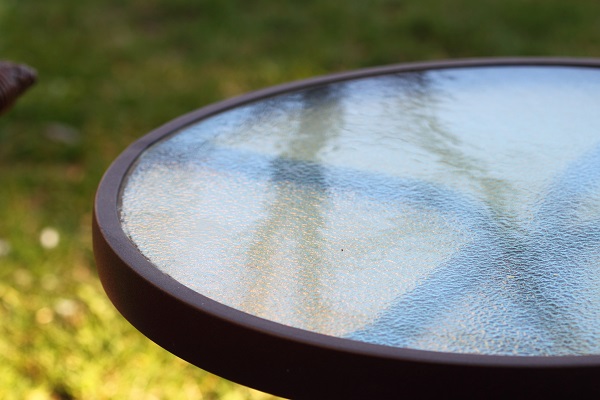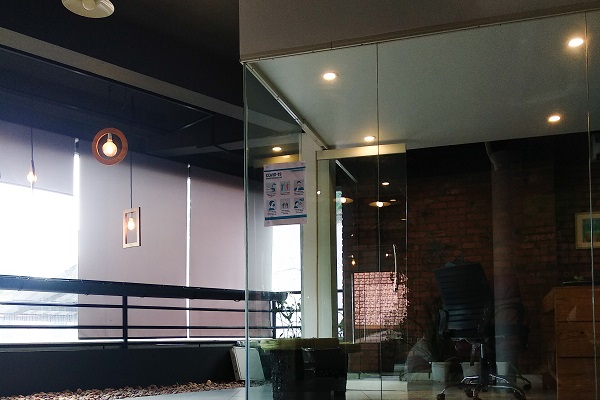

Sustainability is a conscious choice. While we are witnessing the deterioration of the planet on a macro level, the change starts at a micro level, with us. Since the design industry has a direct relationship with the built and unbuilt environment, it is up to us to proactively choose to be aware, and effect a positive change in our surroundings. Materials should be chosen carefully and used sustainably. In these circumstances, designers are gaining confidence in Glass as a Sustainable material.
Glass is a multi-faceted material, with a strong aesthetic appeal, easy availability and versatility. One of the most sustainable aspects of Glass is that it is recyclable in a closed-loop manner i.e. it has indefinite value through recycling. Also, the amount of solid waste it produces in that process is very low. Being an inert material, it is chemically resistant and has good insulation properties. Glass gives immense control over the passage of light, acoustics, and is easy to install. Not only does it reduce daily energy consumption but also our energy bill costs! Neither does it emit any harmful gases like VOCs (volatile organic compounds) that might be present in the finishing paint applied over brick or wooden walls. These multiple utilities of glass have made it the designer’s favorite for interior and facade design.
Sustainability of a material is determined not only by the eco-friendliness of the material but also in the way it affects the maintenance costs, indoor environment quality, the lighting and ambience it enhances, how it circumvents future retrofitting costs, etc. Glass performs well on most of these counts and has manifold uses in and around our homes, for partitions and fenestrations, furniture, and so much more.
With a diverse variety of glass types available, each type has its strength where it performs the best. Hence, ensuring that we use the pertinent type is vital for its optimum functioning.

©Jayalakshmi S.
In areas where we need to create a subtle division, decorative glass can be used, like in living rooms or lobbies; whereas in offices or the bathroom, sandblasted, frosted, etched glass is recommended to control the transparency. Such glass is usually Toughened or Tempered, which provides good resistance to breakage, and can also be used for panelling the walls. For offices or studios, insulated glass helps to reduce the surrounding noise levels and achieve acoustic comfort.

©tommerton2010
Large fenestrations are not only appealing but also sustainable. They allow in enough daylight, reducing the cost of daytime lighting. While designer glass like stained or etched glass adds an excellent aesthetic to partitions for their visual properties, a glazing's U-value, shading coefficient, relative heat gain, visible light transmission and acoustic performance determine how adequate it is to use for fenestrations.
High-performance Solar Control glasses are tailor-made to reduce solar gain by 50% and minimize glare, thereby reducing the need for artificial lighting and cooling. Laminating them increases their acoustic performance as well. Reflective glasses are technologically treated to reduce heat gain by reflecting heat and are used for glazing the entire building as a whole. They can further be laminated to strengthen them, eliminating the threat of breakage. Other glass types like Low-E and tinted glass also provide excellent insulation by absorbing radiation and glare and filtering out harmful UVB and UV rays.

© Scott Paterson
Using tinted glass for sliding doors or wardrobe doors will never go out of style! These must be toughened and can be frosted, etched and many more. Lacquered Glass is preferred in kitchens over furniture and cabinets because of its vivid colour palette and glass being a non-corrosive and humidity resistant, easy to maintain material.
Lacquered Glass, also known as backpainted glass is an excellent alternative to simply tiling the backsplash and is available in a variety of colours and textures. Lacquered glass provides a seamless finish and aesthetic. Using glass for the backsplash can save maintenance costs as well since it is easier to clean and manage.

©Jayalakshmi S.
The Indian Green Building Council (IGBC) also awards the correct usage of glass in interior design with credit points.
Architecturally, in building design, passive system design in buildings such as Trombe walls, skylights, thermosiphons and brise-soleil also make use of glass. Sustainability and contemporary design need not contradict each other anymore. With innovations in glass, watch homes come to life, creatively, and sustainably!
Aasavari is an architect and designer from Mumbai. A trekking enthusiast, she tries to find stories in all the places. Read More